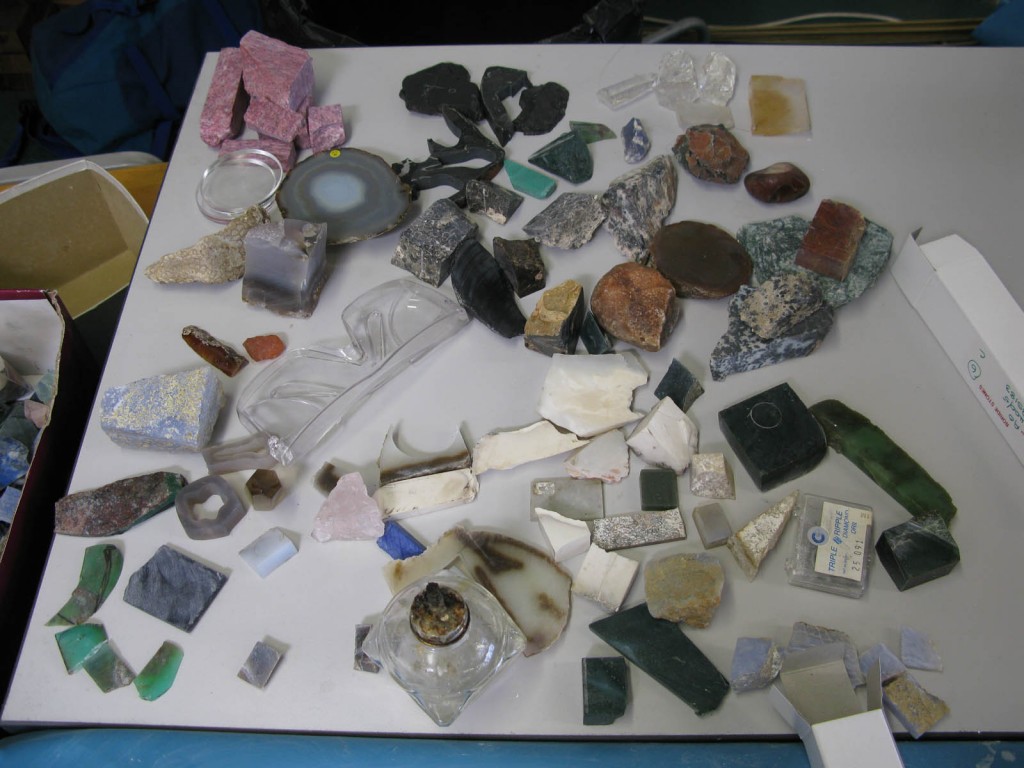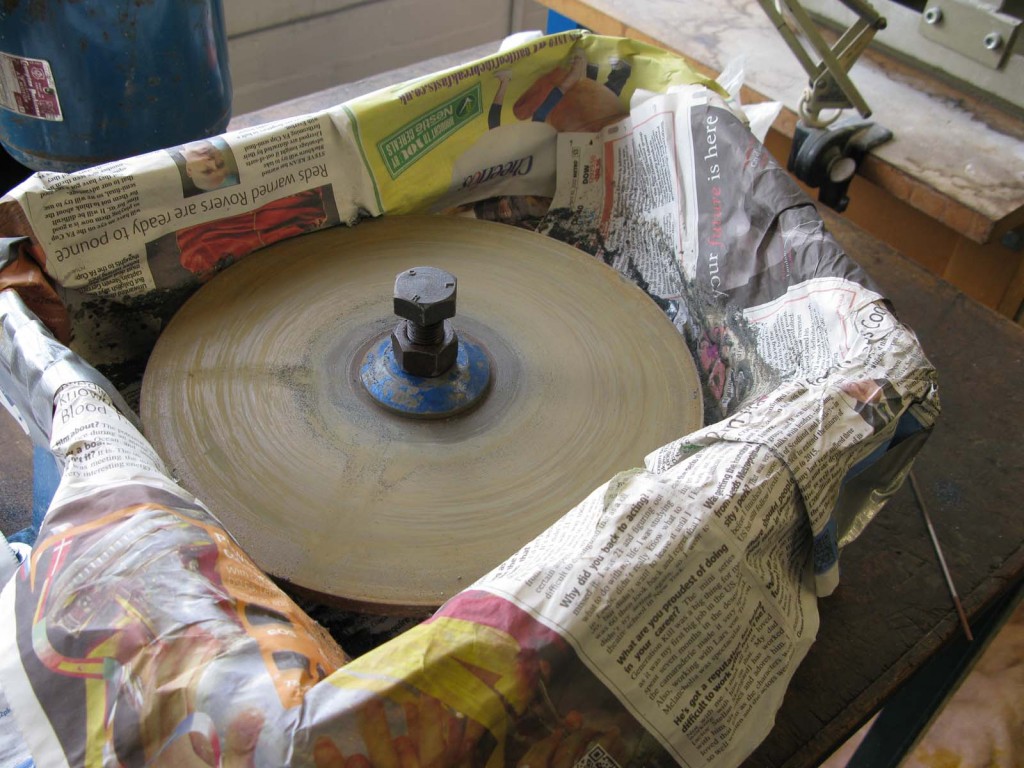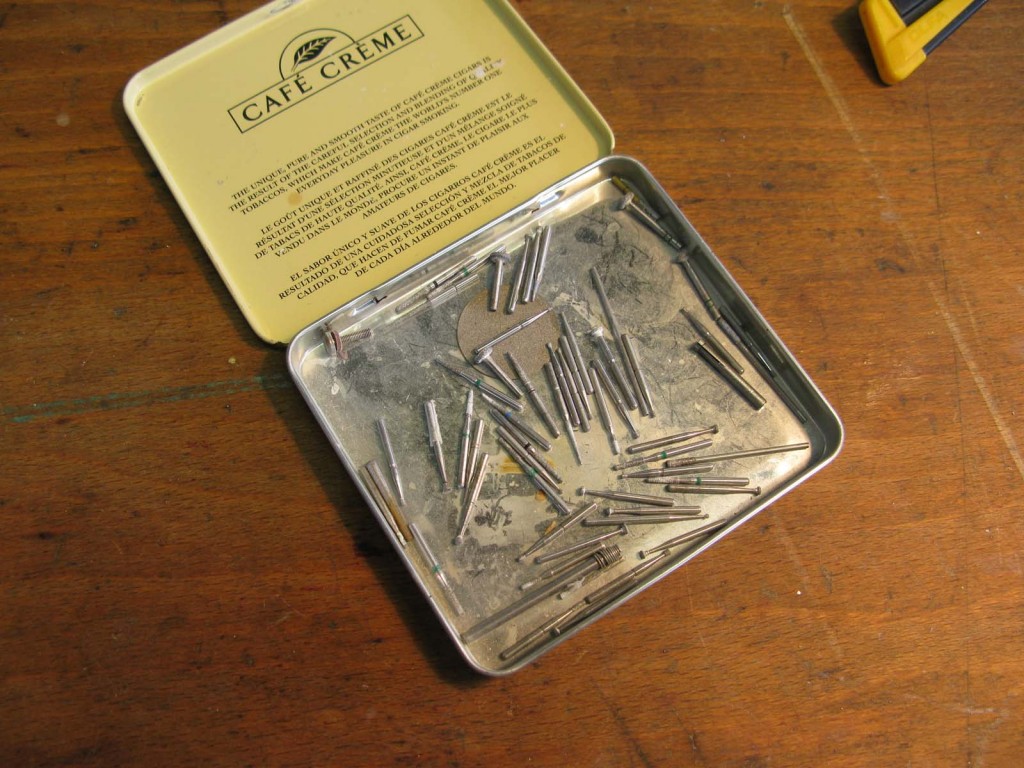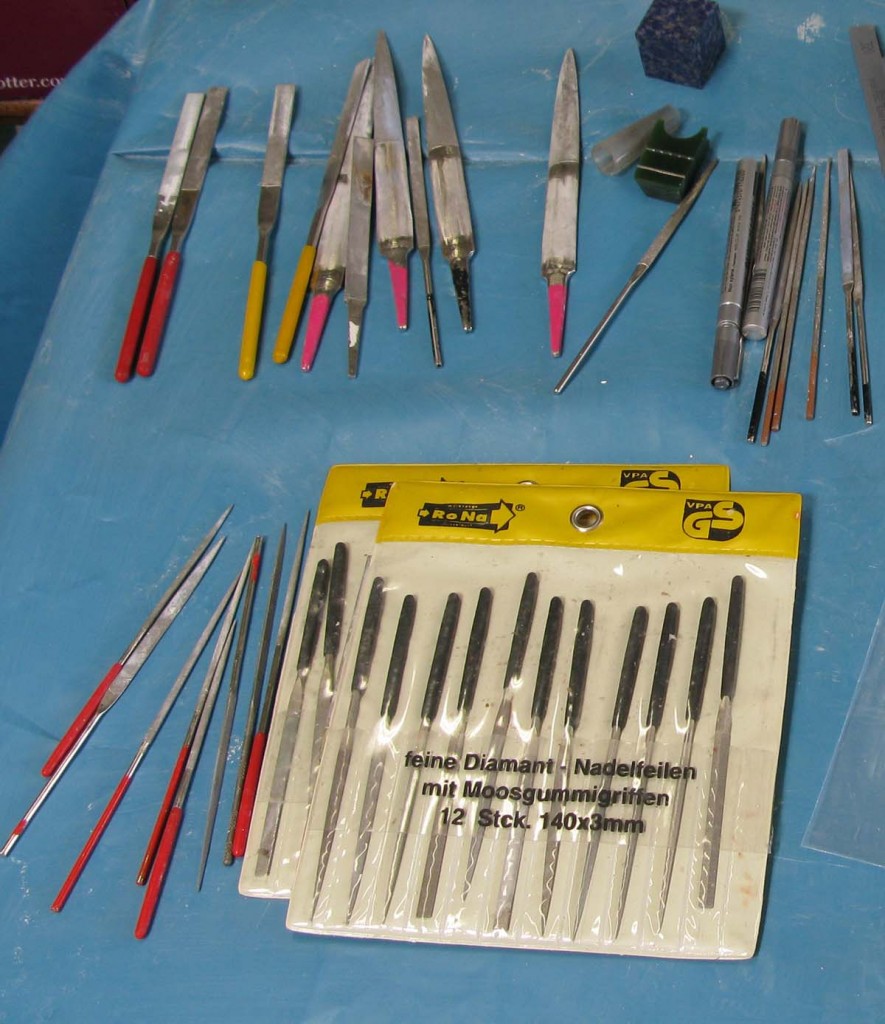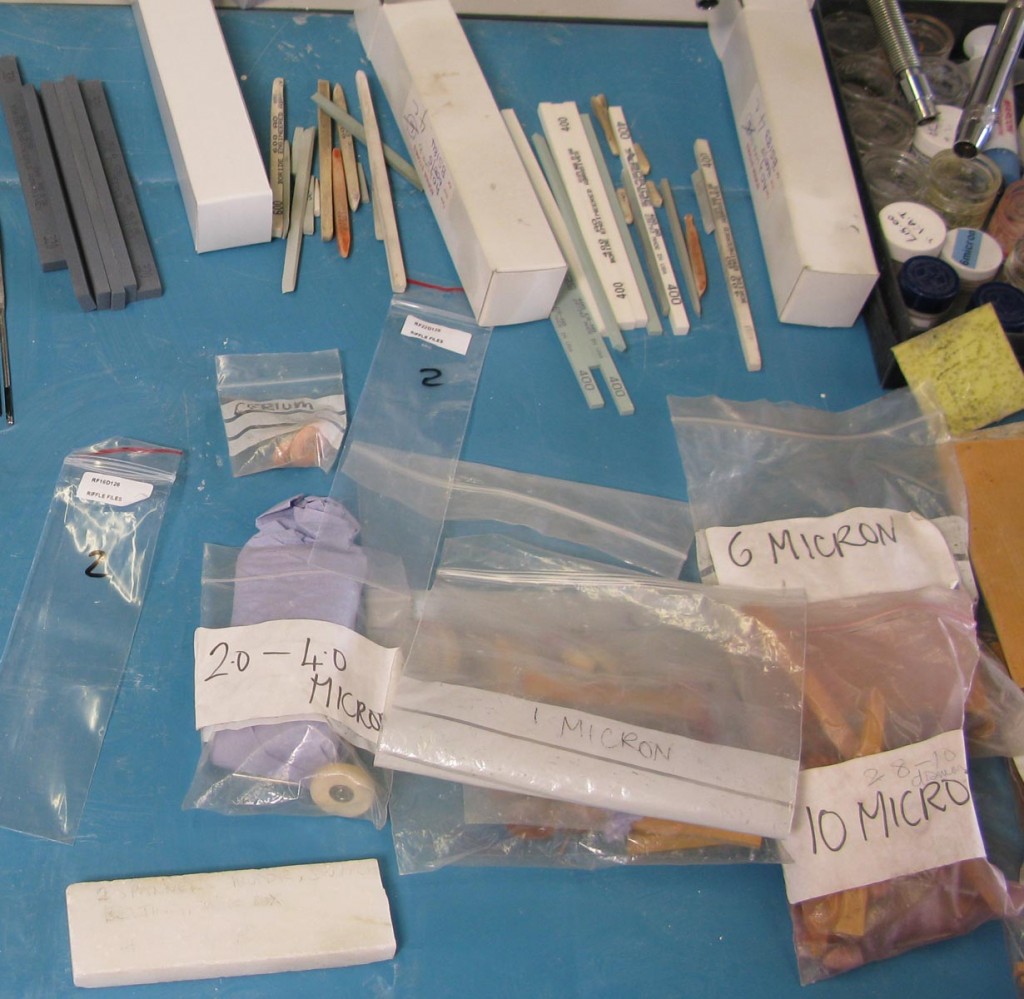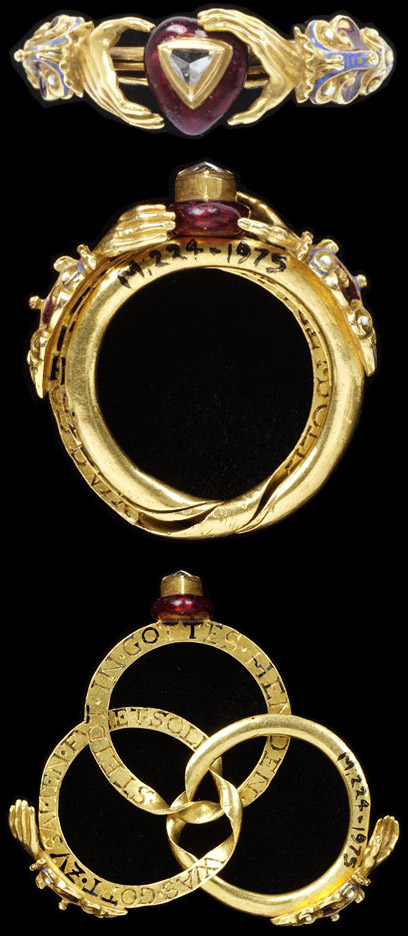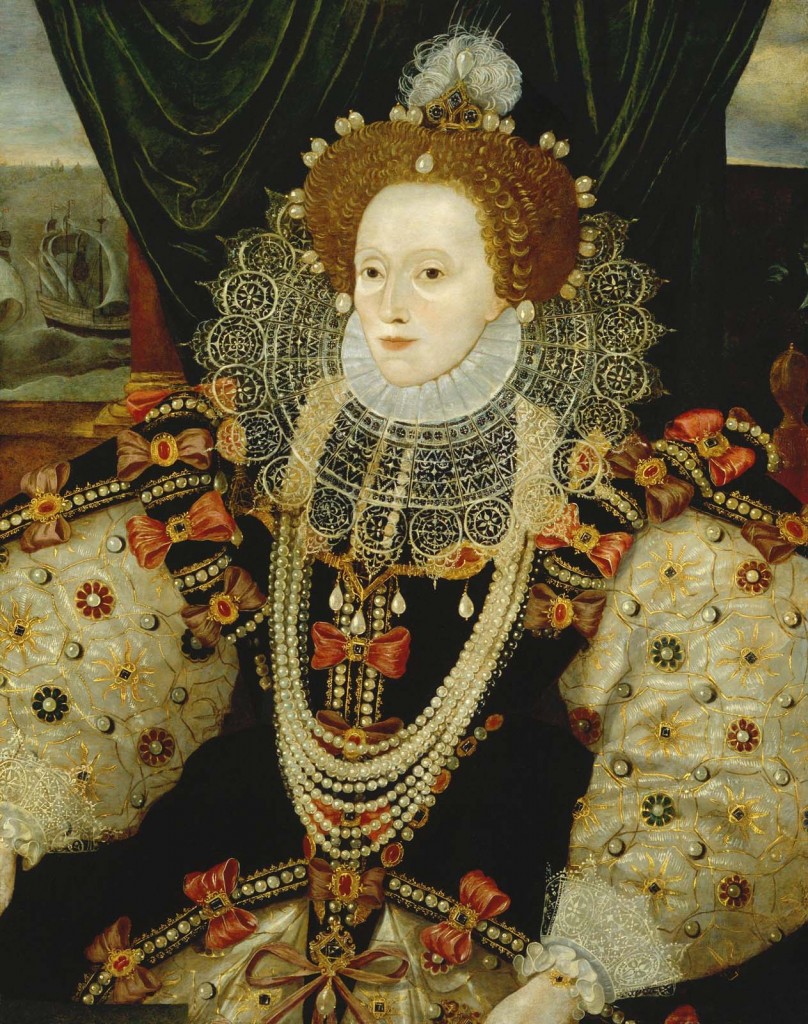After Paris I took a short train ride to London where I was the epitome of an Australian almost unable to function because of the cold, and it was spring.
The main reason for going to London was to do a mokume gane workshop with Alistair McCallum at London Metropolitan University. However I found out when I arrived in London that the class had been cancelled, and they had somehow neglected to email me! I was gutted, I’d been looking forward to it for months and to have it dangled in front of me then yanked away at the last minute was crushing. I have succeeded at making mokume gane through self-tuition while at Design Centre Enmore, but I have never had any formal teaching in the technique or even seen any mokume, in real life, other than what I have made myself. However all is not lost as I am still booked into another mokume workshop later on in my travels.
Instead I was able to do an alternative course at the London Met in gemstone carving taught by Charlotte de Syllas. It turned out the course was a great substitute. I have always enjoyed carving, having carved bone, wood, Perspex, delrin and various other materials. I have also often thought it would be great to be able to make a stone do what I want it to, in order to work with a piece, rather than having to work with stones that are available ready cut.
Charlotte is a renowned British maker, the Victoria and Albert Museum has several pieces by her, including an amazing necklace with two carved white opal faces with black jade and white gold. She uses various stones the way a painter might use colour, often combining several in a single piece. This is her website.
It was a 4-day course where we would learn the basics of stone cutting, carving and polishing to create a small piece. Unfortunately due to the mix up with my enrollment I was not sent the preliminary notes and so did not have a design prepared when I arrived.
Charlotte had a large variety of stones that we could select from: green jade, jadeite, nephrite, white and black jade, quartz, lace agate, chalcedony, chysoprase, jasper, lapis lazuli and more.
I chose a lovely piece of rough chrysoprase, one of my favourite stones, and started to figure out what to do with it. After puzzling over it for a while I came up with a design. I forgot to get a photo of the stone before I started which was dumb, so instead I found this picture on Google of rough chrysoprase, to give an idea of what it was like.
The first steps in gemstone carving are to cut the stone, using a saw, to the rough size required, however since I was using all of the stone in the piece that was available I didn’t need to do that. Instead I went straight onto removing the rough dirty part to reveal the green stone underneath and making the very basic outline shape using grinding wheels.
The workshop was set up with a variety of stone working machines like the lapping wheel, which is used with diamond compound to cut perfectly flat planes and facets,
and the sintered diamond spindle which was used to gouge out larger areas,
there were also diamond core drills for drilling holes in the stone.
After having made the rough shape you mark the stone with your design with a pencil or silver marker. The silver marker shows up well when the stone is wet and also doesn’t come off too easily, though I found that a lead pencil worked almost as well.
Next you start to carve the stone using diamond burs on a pendant drill or micro motor. The burs and the stone must always be kept wet or the friction will wear the diamond off the metal and it will no longer cut. This was a slow process and required the design to be repeatedly marked out on the stone when the lines had been worn away.
Turns out my design was not very well thought out at all, and what had seemed like some vaguely pleasing abstract swirls on paper, looked like an ugly hippy souvenir shop tiki carving once it was translated into stone.
I was despondent over wasting such a pretty green piece of chrysoprase with a design that I didn’t even like, but Charlotte advised me to just keep going, and finish it and try to make the best of it. So I pushed on.
Charlotte had an enormous variety of sizes and shapes of burs for us to use, from large down to the tiniest of wheels for cutting very fine lines.
After you have made the shape as well as you can with the burs, you go on to smoothing with diamond files, also with water. It was a weird feeling rubbing a file over stone and at first didn’t feel like it was doing anything until I got the hang of it.
After the files you use these abrasive sticks in 400 and 600 grit, once again with water to remove the file marks. After that diamond powder mixed with machine oil is used to polish, the compound is rubbed on the stone with a small hardwood stick, we used boxwood. You just keep going through the various grits until you reach your desired degree of gloss.
Because of my dithering over my design I didn’t get to polish mine as well as I could have. Here are some pics of pieces that others have made during Charlotte’s workshops:
On one of the days Charlotte had a gemstone dealer come in to see us with some of her wares. The dealer had all the usual cut stones but also a big range of rough and uncut stone pieces that were perfect for carving. I could have spent hundreds without even blinking. She had a beautiful chunk of sugilite, my favourite stone, but alas I could not afford it and had to settle for amethyst, also purple and much cheaper. I also got a nice clear quartz with an orange bloom at one end, some synthetic emerald and a small off cut of synthetic ruby.
Other than trying to keep warm, the rest of my time in London was spent seeing as much jewellery and art as I could cram in. I met up with the fabulous Hannah-May Chapman, a fantastic contemporary jeweller who I had met in Munich, for a day of trawling the various jewellery sites in London. We went to Lesley Craze Gallery, where I was beside myself to see actual works by my hero Wendy Ramshaw. I discovered heaps of other British designers whose work I had not seen before. The ones I like most were Emmeline Hastings, who was working in the gallery that day and graciously let us hold her works. She combines Perspex with titanium in a really interesting way. I also liked Maud Traon, Chiara Antonietti, & Michael Berger.
Hannah also took me round the jewellery district and into the tool shops. We also went to Electrum where I was once again thrilled by the Wendy Ramshaw collection that was on display there.
I also went to the Victoria and Albert Museum where I spent 4 hours in their jewellery rooms alone. They have a chronological display starting with ancient pieces going right through the ages up until contemporary, with pieces from some of the most well known contemporary British and European makers. There are literally hundreds of pieces and I was enthralled. The rooms are beautifully set up, the interiors are all black, but very nicely fitted out, no crappy painted mdf to be seen. The jewellery is in vertical display cases along the walls with fabulous stand alone curving vitrines that snake up and down the centres of the rooms holding exceptional pieces that can be seen from the front and the back. There is also a spiral glass staircase leading up to a mezzanine with the horology display. Unfortunately visitors are not allowed to take photos in the jewellery galleries, but the V&A does have a fantastic website with lots of detailed information about many of the pieces in the collection, as well as good quality images of the fronts and the backs. There were hundreds if not thousands of stunning pieces but memorable ones were the Mountbatten Bandeau made by Cartier in 1928 from platinum with carved rubies, sapphires, emeralds and diamonds.
As well as medieval gimmel rings with hidden inscriptions and compartments. I became a little caught up with copying down the various inscriptions that the givers of these rings so many hundreds of years ago had engraved on these precious gifts. Things like ‘To you I have always been as I saw myself’.
The V & A also had an exhibition of British design which had some great furniture and fashion (Bowie’s original knitted one-armed one-legged Ziggy Stardust stage costume) but only a couple of pieces of jewellery (one by Charlotte de Syllas).
The British Museum also houses many, many pieces of ancient and medieval jewels and artefacts. I love the various hoards and treasures that have been unearthed over the years in various farmers’ fields around the country. There’s the Sutton Hoo hoard, the Mildenhall Treasure, the Cheapside Hoard and so many more. One could easily spend a week in the British Museum there is so much to see and all of it fascinating. I always go to visit the poor bog man who died in a peat bog 2000 years ago.
I also went to Somerset House where there was a Wendy Ramshaw retrospective. The show was a reprise of an exhibition from a few years ago, a concept show called Rooms of Dreams. I’m not sure what it is about Ramshaw’s work that gets me so much, maybe the geometry, the way so many of her designs are based on concentric circles, or the way that she incorporates the stand for the rings into the work so it becomes like a stand alone sculpture. The exhibition included pieces from her early paper and acrylic collections, her works with glass, the ring sets on stands, right through to furniture and some of her recent architectural gate projects.
The other jewellery pilgrimage I had to make was to see the Crown Jewels at the Tower of London. I have seen them before, but I wasn’t a jeweller then. So it was like seeing them with new eyes this time. Clapping eyes on the Cullinan I or the Star of Africa was probably the highlight in terms if shock and awe. At 530 carats it is the largest cut white diamond in the world, and it is the size of an emu egg (I think). The other crowns were equally stunning with their plethora of diamonds. I also got a kick out of seeing pearl drops on the Imperial State Crown that once belonged to Elizabeth I, my favourite Tudor. The way that she adorned herself with jewellery, make up, her hairstyles and of course fashion are all fascinating to me. Elizabeth I was reportedly obsessed with pearls, and if you look at any portrait of her she is invariably covered with them. They’re sewn all over her gowns, her sleeves, nestled in her hair, and slung in strands around her neck, some hanging down to her knees. Supposedly, according to rumour, Elizabeth had a female rival executed in order to gain access to her pearls. All that remains of Elizabeth’s multitudes of pearls and jewels are the 4 large natural pearl drops hanging in the centre of the Imperial State Crown.
I love that gems like Elizabeth’s pearls, the Cullinan, the Koh-i-Noor, the Black Prince’s ruby (actually a spinel) can be traced through history and have been owned by so many significant historical personages.
They also had on display the cases that are used to transport the treasures when they are taken out to be used on occasions of state. I loved seeing these specially crafted boxes and carry cases. Some of the cases are starting to look a bit worn out, which is kind of amusing when you think that the pieces they are used to transport are worth hundreds of millions of pounds.
I took myself to the British Natural History Museum to see an exhibition by German doctor Gunther von Hagens who invented ‘plastination’ – his process of preserving flesh and tissues by the impregnation of epoxy or polyester resin. This show was of animals with no skin on, rather than humans, his usual subjects. It was very interesting and I found the textures created by the exhibits that were just the preserved blood vessels of an animal really beautiful sculpturally. However, I ended up feeling sorry for the animals. I don’t know why I should feel more sorry for an animal with no skin that any other stuffed bird or skeleton in a museum, somehow the thought that the creatures didn’t get a say in it and are now literally flayed for all the world to see, seems to lack dignity. I know that makes little sense.
The final exhibition I saw in London was at Gallery So on Brick Lane. Instead of jewellery, So was showing kinetic sculptures by Swiss artist Pe Lang. The works incorporated magnets, motors and various components. When I was peering in the windows of the gallery I wasn’t even sure if what I was looking at was art. They looked like some kind of technical laboratory equipment with unknown purpose. I almost didn’t go in. I’m glad I did however because the gallery attendant turned them all on for me and they came to life performing their repetitive purpose-less functions. A magnetic ball that hovers up and down, thousands of tiny black rubber ‘o’ rings that vibrate along cables, a mechanical dropper that makes perfectly spherical drops of water in a grid, identically sized meniscuses (menisci?). There was also a large floor work taking up all of the rear space. It was a carpet of slightly crumpled tissue paper that moved ever so slightly and rustled unnervingly when it was turned on.
